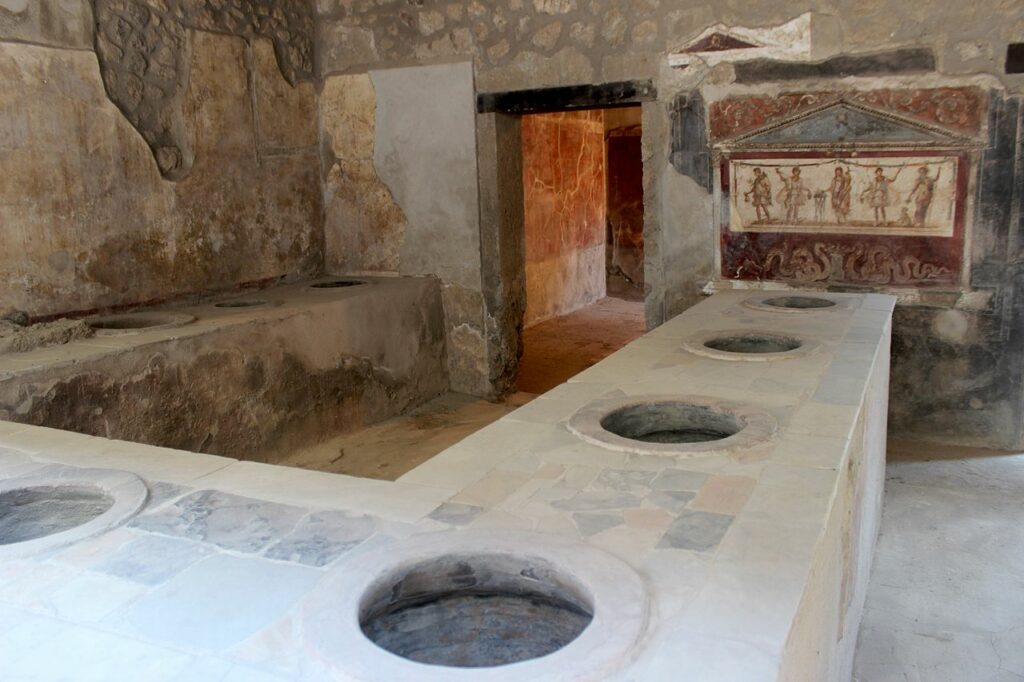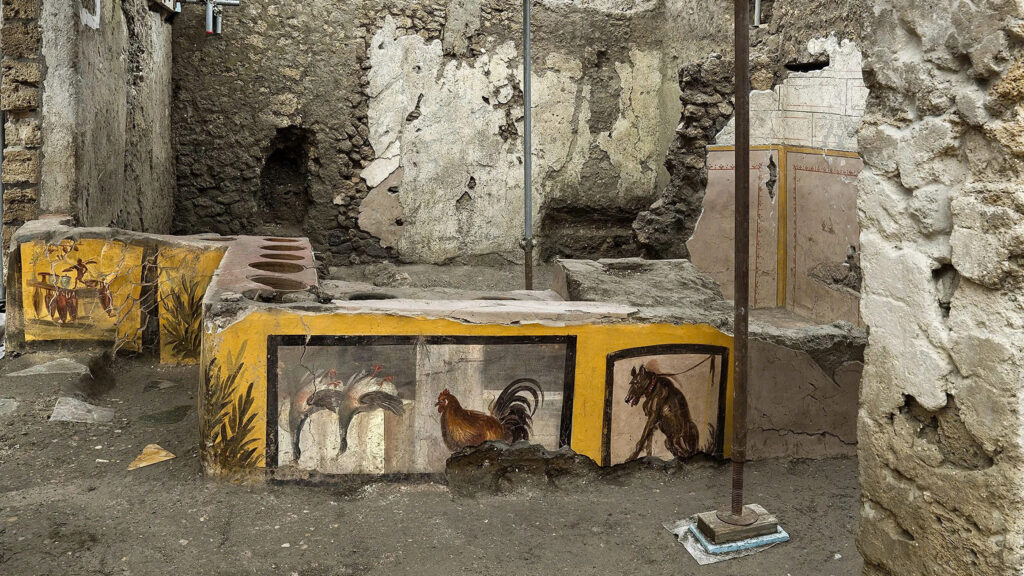The Heart of Ancient Roman Street Food

In the shadow of Mount Vesuvius, nestled within the bustling streets of Pompeii, a remarkable archaeological discovery offers us an extraordinary glimpse into daily life during the Roman era. The Thermopolium of Vetutius Placidius, an ancient fast food establishment, stands as a remarkable testament to the vibrant urban culture that thrived before the catastrophic eruption in 79 CE.
A Bustling Culinary Marketplace

Imagine walking through the streets of Pompeii around the 1st century BCE, where 89 similar establishments beckoned hungry workers and locals. The thermopolium was more than just a place to grab a quick meal—it was a social hub, a culinary center that served hot, affordable food to those far from home or without kitchen facilities.
The Architecture of Appetite

The establishment’s most striking feature was its beautifully decorated counter, housing six massive dolia—terracotta containers standing nearly two meters tall. These containers stored an array of delicacies: chickpeas, beans, and dried fruits, ready to be served to a constant stream of customers during peak hours.
More Than Just a Restaurant

Beyond its culinary function, the thermopolium revealed the intricate layers of Roman social life. A small shrine, or lararium, adorned the back wall, dedicated to protective deities like the Lari, Genius, Mercury, and Dionysus. This space demonstrated how Romans seamlessly integrated commerce, family, and spirituality in their daily existence.
A Treasure Trove of Historical Insights
In a fascinating twist, archaeologists discovered a hidden cache of 1,385 bronze coins within one of the dolia—a total value of approximately 585 sesterces. This find provides a rare, tangible connection to the economic practices of the time, now preserved in the National Archaeological Museum of Naples.
The Personal Touch: A Garden of Flavors

Attached to the thermopolium was the owner’s private residence, complete with a garden likely cultivated with aromatic herbs like thyme, rosemary, and basil. This detail highlights the Roman commitment to fresh, flavorful ingredients, even in fast-paced urban settings.
A Window into Ancient Life

The Thermopolium of Vetutius Placidius is far more than an archaeological site—it’s a time machine transporting us back to the vibrant, complex world of ancient Pompeii. It reveals a society where food, commerce, and spirituality were intricately woven together, offering modern viewers an intimate understanding of daily life nearly two millennia ago.
As we explore this remarkable site, we’re reminded that despite the centuries separating us, the fundamental human experiences of hunger, community, and commerce remain remarkably unchanged.

